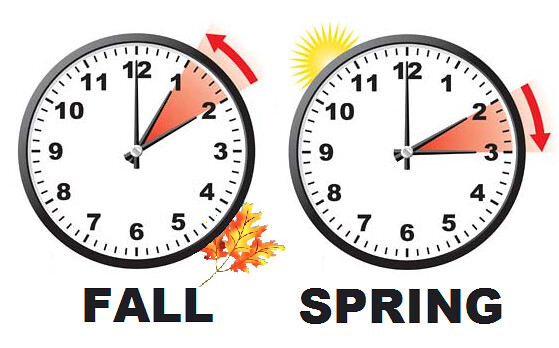For how advanced our society supposedly is, we sure seem to engage in a lot of customs and practices that, at face value, make very little sense, even if they might have made sense long ago. One prime example is Daylight Saving Time. According to timeanddate.com, this practice was born out of the belief that setting clocks back an hour when it started getting darker in the evenings would conserve energy, which was paramount during World War I, when fuel was a prized resource. Shortly after the war, most places abandoned the practice, but a few, including some parts of the U.S., did not. Daylight Saving was observed very sporadically in the U.S. prior to the 1970s and 80s when, as a response to the energy crisis that had occurred several years prior, Congress enacted legislation that put it into effect for the foreseeable future, as reported by Mental Floss. This explains why every fall we reverse the time on our clocks back one hour, and every spring we advance our clocks one hour ahead, hence the axiom “spring ahead, fall back.” The result is that, although we technically gain an extra hour of sleep in November, the net gain of sleep is actually zero, because we end up losing an extra hour of sleep in March. But surely there must be some method to this madness. Otherwise, why would we continue adjusting our clocks twice a year, every year? As it turns out, though, there are just as many, if not more drawbacks to Daylight Saving as there are benefits, meaning that it is time to seriously consider kicking it to the curb.
Proponents of Daylight Saving Time often point to the potential decrease in spending on energy and electricity that is thought to result from it. The idea is that, in the spring, when clocks are pushed forward one hour so that 5 p.m. becomes 6 p.m., people will be able to save money on lighting because, even if it is 6 p.m., the sun will not “know that” and will still set as if it were only 5 p.m., and thus there will be an extra hour of daylight each day. The problem, though, is that the data that has been collected, far from proving that Daylight Saving saves money, is largely inconclusive. Although there is some evidence of a nominal decrease in spending on lighting, this positive effect disappears when the extra electricity and heating fuel that is needed when it suddenly gets much darker in the early mornings and evenings are taken into account. People are also more likely to leave their homes when it is light outside, which usually involves getting into a car, increasing spending on gasoline. What’s more, studies have demonstrated that DST increases air-conditioning use and therefore cost, since the sun is out for longer in the summer and the temperature does not drop as soon as it would if the sun had set earlier.
Besides not being terribly efficient, oddly enough, DST can also wreak havoc on people’s health. Theorized to be related to a disruption in circadian rhythm, American Heart Association News reports that there is a small but statistically significant increase in the number of heart attacks and strokes on the Monday immediately following “the spring forward” in March. According to Vox, Spring DST has also been linked to an increase in car accidents, presumably due to drivers becoming distracted or falling asleep at the wheel due to fatigue from losing an hour of shut-eye. It has been estimated that 30 people die prematurely each year due to DST-related car accidents. In addition to the negative health effects, DST also lessens worker productivity, and due to the confusion caused by countries changing their clocks on different days (and some not changing them at all) it results in an estimated $147 million dollars a year in lost revenue for airlines as reported by Quartz.
But if Daylight Saving Time is so awful, why do we still have it? Well, for one thing, people seem to like the fact that pushing the clock forward in the spring results in the sun setting “later” in the summer, making days seem longer, thus making it easier to spend time outside at night. But with people living more and more of their lives indoors (because of smartphones and other technologies), this matters less now than it once did. There are also a few industries that have a vested interest in maintaining the status quo. Halloween candy manufacturers, for example, benefit from DST because children stay out trick-or-treating longer because of it. Convenience stores also benefit, since people are more likely to stop in to buy something if the sun hasn’t set yet. DST is also a boon to sports and recreation retailers. Of course, that hasn’t stopped politicians and other individuals in power from trying to end the practice. Several states have proposed and even passed and signed into law legislation that would end DST. But because states need final approval from Congress to make the change official, DST remains in effect even in those places. Even if individual states succeeded in abolishing DST, the result would be a hodgepodge of different times from state to state, meaning that Massachusetts could be an hour behind Rhode Island, even though they’re right next to each other. It’s clear that if we really want to end Daylight Saving Time in the United States, there needs to be a concerted effort on a national scale in order to accomplish it. For now, that is unlikely to happen. In the meantime, we’ll just have to keep changing our clocks twice a year, just like we have been for decades, even though it no longer makes any sense (and gives people heart attacks).


Leave a Reply